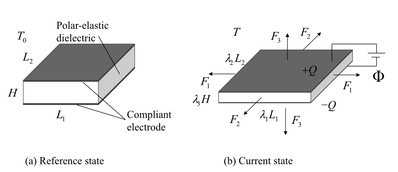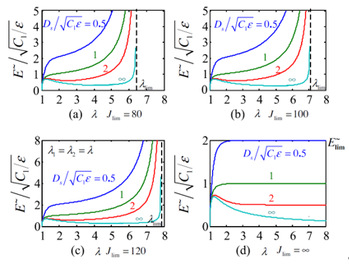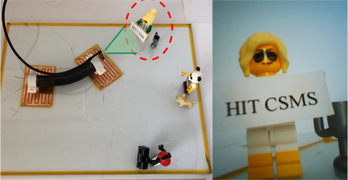Electroactive Polymers (EAPs)
Electroactive polymers (EAPs) are typical soft active material that can response to external electric stimuli. Dielectric elastomer (DE) is one of the representative EAPs and is widely used as an actuator or sensor. It is actually a sandwiched structure that consists of one single elastomer film and complaint electrodes on both surfaces. Subject to an external electric field, DE will reduce in thickness and expand in area due to Maxwell’s stress. When the electric field is revoked, it can restore to its original shape.

Fig. 1 Schematic of a dielectric elastomer membrane subjected to forces and an electric voltage
Based on this property, DE can be used to create intelligent transducer and has long been desired for the development of aerospace, mechanical engineering, artificial muscle, biologically inspired robots, and biomedicine. Our group focuses on synthesis, actuator design, constitutive theory, and stability of dielectric elastomers.
(a) In order to offer guidance in the design and fabrication of excellent actuators featuring dielectric elastomers, we investigate constitutive models, large deformations, electromechanical instabilities, snap-through instabilities, thermo-electro-mechanical instabilities and typical failure models of dielectric elastomers and their composites.

Fig. 2 Nominal electric field and stretch of dielectric elastomer undergoing polarization saturation
(b) We have fabricated the spring-rolled, folded/stacked, and cone actuators of dielectric elastomers. Their mechanical and electrical properties are also investigated. Based on the spring-rolled dielectric elastomer actuator, the bio-inspired soft robots are designed and fabricated, and their performance is experimentally characterized.

Fig. 3 Bio-inspired soft robots